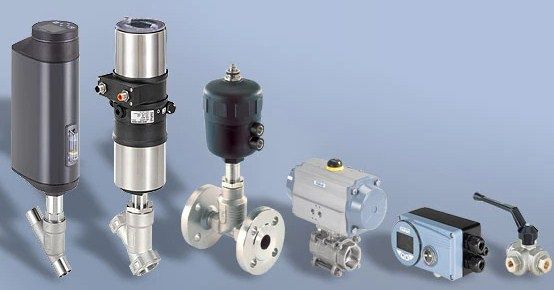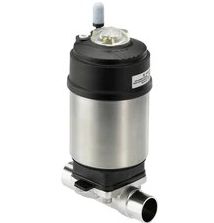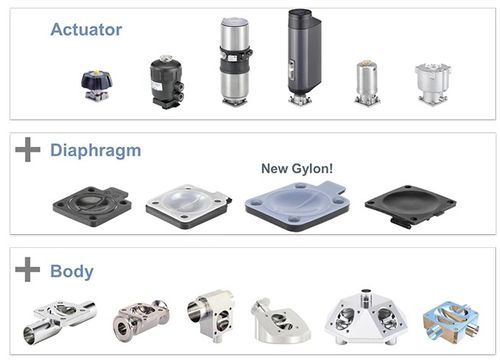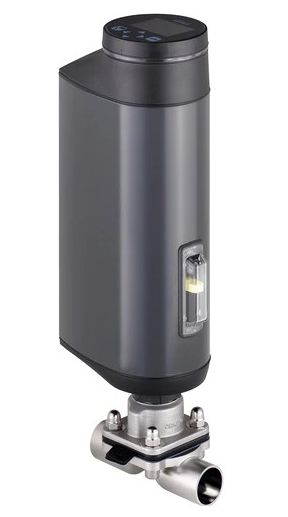Burkert Diaphragm Control Valve: Types and Difinition
11.07.2022
The demanded type of pipeline fittings is represented by control valve systems, which differ in design nuances and scope. They are installed in pipelines for various purposes and serve to control the working medium, providing a change in its volume or flow area. Using valves, they control pressure and other parameters, providing effective regulation of technological processes. Today we will learn what a diaphragm control valve is from Burkert.
What does a Burkert valve do?
Pneumatic diaphragm valves are used most often when working with liquids that contain a large number of solid particles. The design of such valves makes it possible to avoid the formation of plaque, which is formed from sediments of solid particles as a result of filtration. This is especially true for working with liquids that contain a large number of solids.
Diaphragm valves are also called seat valves. Its distinguishing feature is that the valve seat is made at the end of the baffle, which is installed across the axis of the fluid flow. In this case, the role of the spool is performed by a flexible membrane. Such a membrane, under the influence of a spindle or a rod, bends in order to block the flow area of the pipeline. Thus, the flexible membrane is able to seal the valve cavity, therefore, the presence of a gland is not required. As a rule, diaphragm valves are used for pumping salt solutions and aggressive media at thermal power plants in chemical treatment systems.
The membrane seals the valve along the sealing bridge. To do this, the membrane is moved by means of a pressure piece within a relatively small distance. The sealing bridge moves towards the membrane. Only slight deformation of the diaphragm is required to fully open the valve. The working medium is in contact only with the surface of the membrane itself, all other mechanical parts do not come into contact with the working medium.
What is a Process Control Valve?
Process control valves are most useful in situations where precise control of liquids, steam, and gases is required. Process control valves allow you to control the flow of liquids, liquids, or gases, as well as temperature, pressure, and level. Of course, for each of these applications, a different valve is most suitable. In addition, valve type depends on pipe size, the total pressure in the liquid handling system, and process conditions, among other factors.
Diaphragm valves are one of the most common valves. The material used to make a control valve depends on the application. While most valves are made of metal, valves for hygienic applications are almost exclusively made of stainless steel.
To achieve the desired fluid flow, control valves use a simple but effective opening and closing mechanism, actuated by electric, hydraulic or pneumatic actuators. Process control valves typically consist of a valve actuator, valve positioner, and valve body.
What are the three types of diaphragm valves?
There are three types of membrane pneumatic control valves such as:
- Globe diaphragm valves.
A diaphragm valve is widely used in stainless steel piping systems in the food and pharmaceutical industries. Manufactured from AISI 316 (SS316) stainless steel, it has good corrosion resistance in salty environments and low-concentration acids, thereby allowing these valves to be widely used in pharmaceuticals and various biotechnical processes. - Forge thee way diaphragm valve.

Forge thee way diaphragm valve - an analog of a through membrane valve, only with 3 outlets for welding. It is also used in the stainless piping system in the food and pharmaceutical industries, where an additional branch of the system is required. Manufactured from AISI 316 (SS316) stainless steel, it has good corrosion resistance in salty environments and weakly concentrated acids, thereby allowing these valves to be widely used in pharmaceuticals and various biotechnical processes. - Diaphragm valves for tanks. A manual tank bottom diaphragm valve is widely used in the stainless piping systems in milk, food, and pharmaceutical media transfer tanks. Manufactured from AISI 316 (SS316) stainless steel, it has good corrosion resistance in salty environments and weakly concentrated acids, thereby allowing these valves to be widely used in pharmaceuticals and various biotechnical processes.
Eltra Trade company provides the best prices for full range of Burkert Diaphragm control Valves.